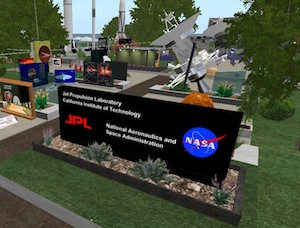Linden Lab have now formalised the announcement on staff cuts – not that there’s any detail and plenty of corporate-speak. The whole claim that layoffs improves company focus is tenuous at best, and borders on insulting to those departing. The press release states:
Today’s announcement about our reorganization will help us make Second Life® even simpler, more enjoyable, relevant and engaging.
So does this mean that those employees laid off were making SL complex, frustrating, irrelevant and non-engaging? A lot of those words can apply to the Second Life experience at times – but in the context of this announcement it’s pretty much fluff.
The real reason is cited as well: strengthening profitability to invest in a browser-based SL viewer. That’s a significant (and overdue) announcement on its own – and given the stasis in the userbase and the US financial situation it’s understandable cost cuts need to fund part of that. The issue for me is that tying the old user experience to the departure of any staff caught up in the restructure, looks plain tacky.
What say you? Are you surprised by the way this has been done or is it a business-as-usual approach by Linden Lab to issues like this?





Recent Comments